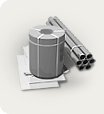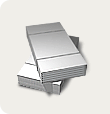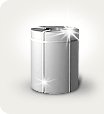Metalworking is an ancient art. There are witnesses that methods of metal processing were known for millennia before Christmas. The achievement of the first sheet metal was a long historical process. The real turning point in sheet metal production was marked by the introduction of the rolling mill, which dates from no earlier than 1480, when Leonardo first described the possibility of "passing material" between two parallel-axis cylindrical rollers to change its thickness.
Since the receipt of sheet metal, metalworking has been directed towards processing sheet metal to obtain blanks and finished products. Metalworking processes are being improved to this day. Mechanical metalworking is most often performed for the purpose of forming sheet metal. Sheet metal forming processes are those in which a force is applied to a piece of sheet metal to alter its geometry without affecting the internal structure of the alloy.
Rolling
One of the frequently used methods of processing sheet metal is rolling, in the process of which spatial products such as cylinders or cones are made from various metals. Each material has unique properties that require appropriate technical expertise and special equipment to gradually deform, bending, both ferrous and non-ferrous alloys. For this, high-precision modern rolling equipment with program control is used, which allows obtaining high-quality workpieces with precise geometry. The rolling process can be used to form the sheet into a wide variety of cross-sectional profiles. An open profile is the most common, but a closed tube-like shape can also be created.






